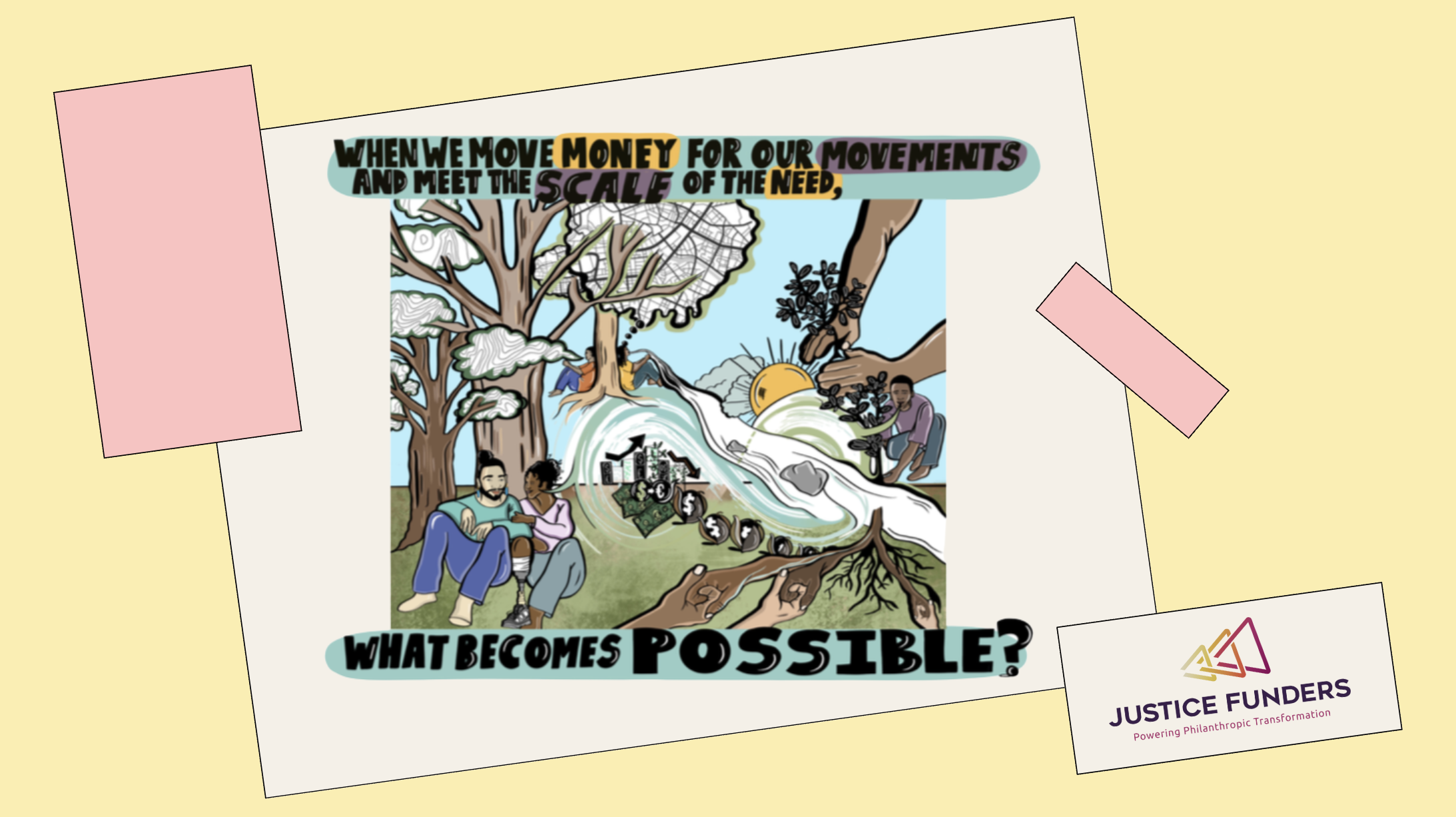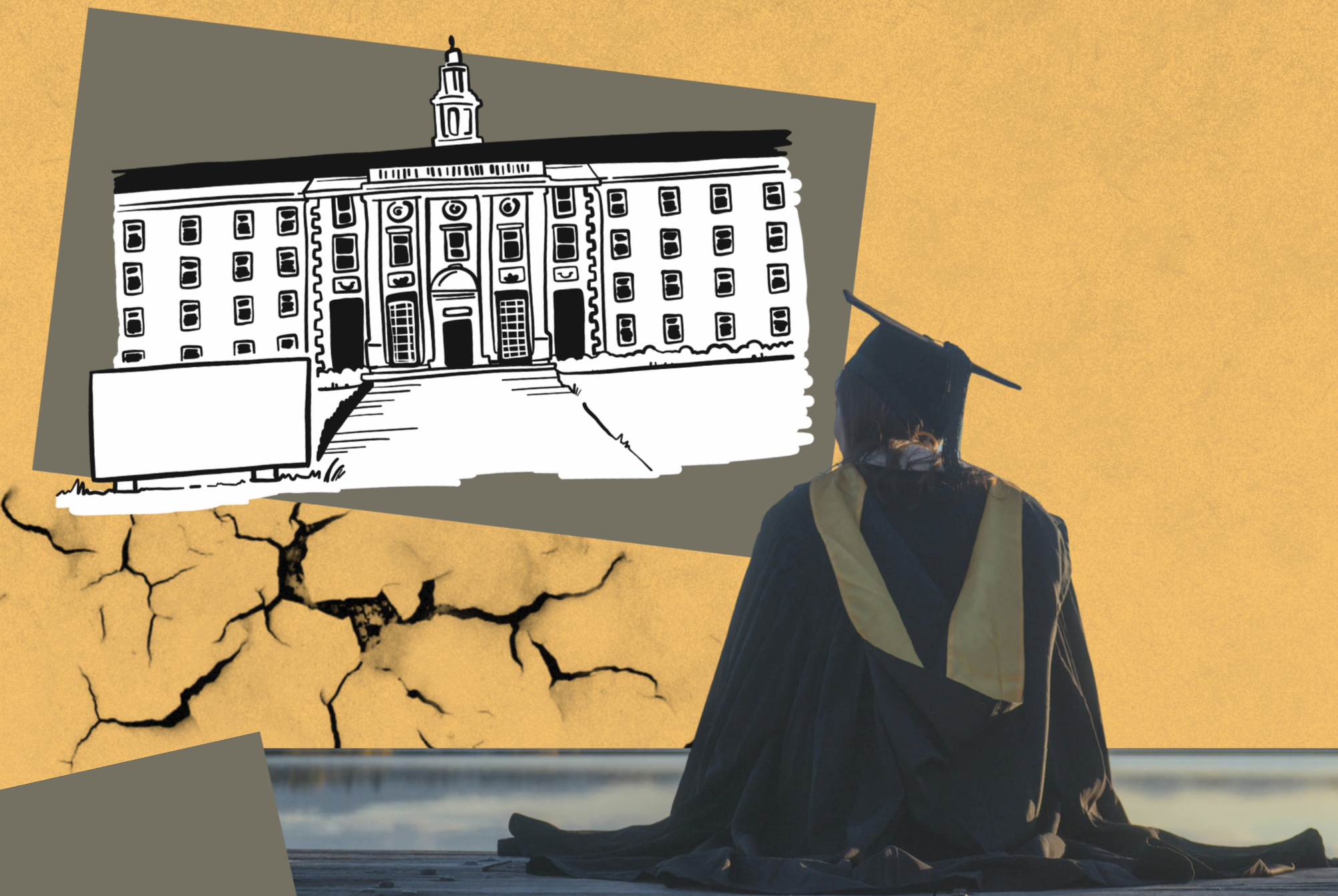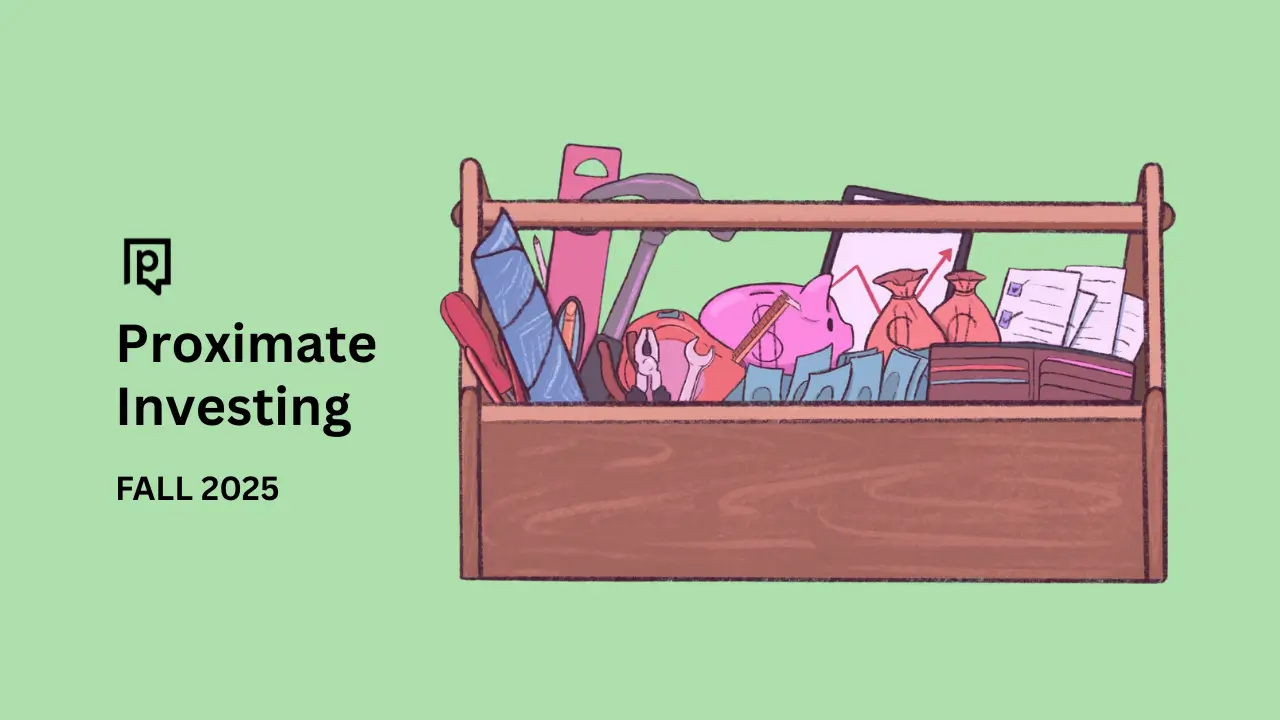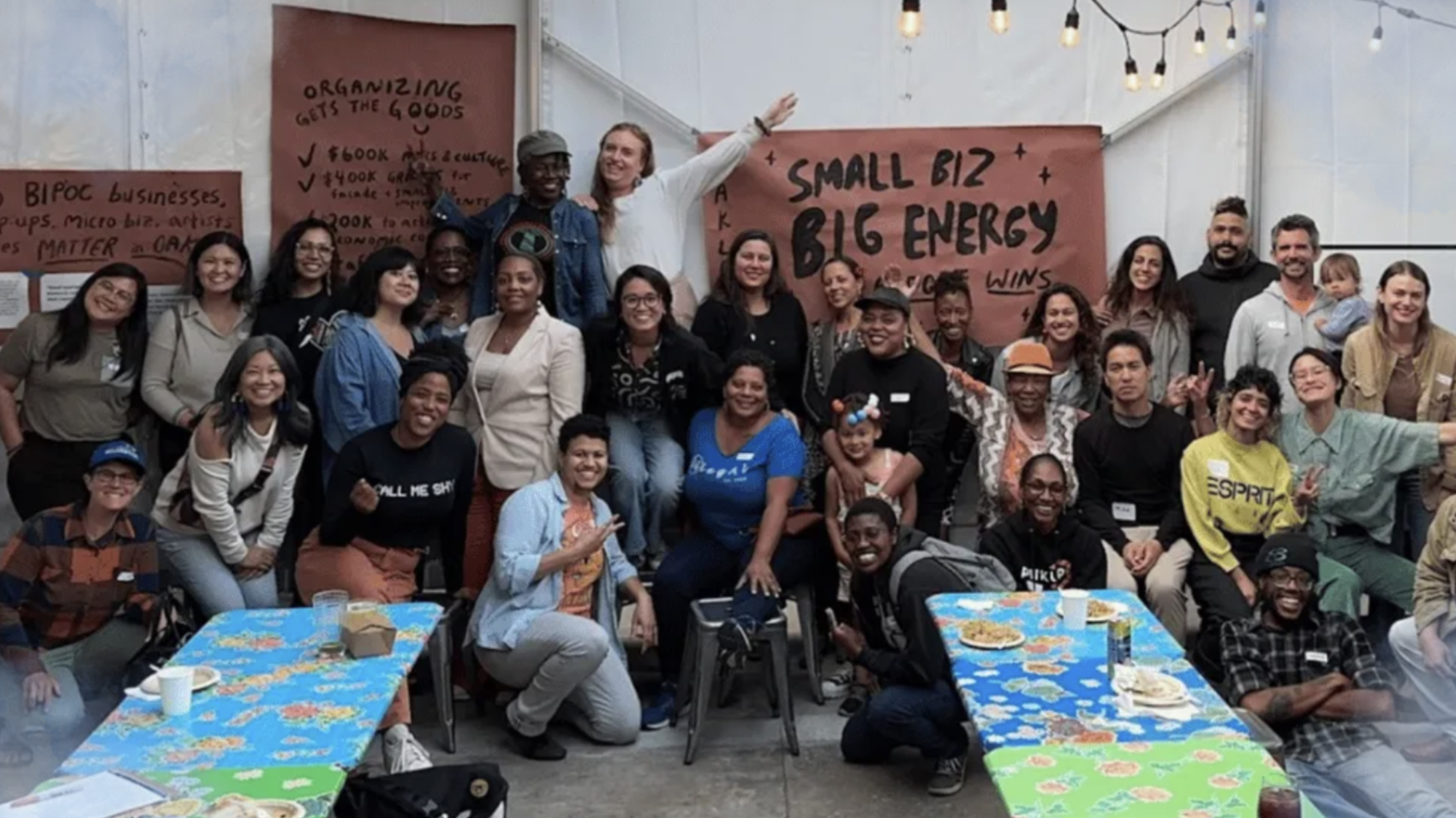In 1793, during one of Philadelphia’s deadliest yellow fever epidemics, a small mutual aid society called the Free African Society sprang into action.
While many wealthy residents fled the city, many members of the Black community stayed behind – burying the dead, nursing the sick, and supporting widows with pooled funds. In a society that excluded them from banking, they built their own system of care.
Long before terms like “participatory investing” existed, communities like these were building systems of capital by and for themselves – because no one else would.
The past few years have seen the rise of a new class of financial institution – variously referred to as democratic investment funds, participatory investment funds, or community-controlled funds. These models, which broadly fall under the bucket of community-controlled capital, are defined by decision-making processes that center the voices of local community members. They are often lifted up as an alternative to banking and philanthropic efforts that fail to meet the needs or values of communities.
But these ideas are not new. Community-controlled capital is an approach to finance that has been present in the United States since the nation’s founding.
While there is no standardized definition of community-controlled capital, it is broadly understood as wealth that is sourced from and reinvested into a cross-section of society that is tied by locality, lineage, or common cause.
“These were often created in the absence of government or state solicitude,” said Ben Soskis, a senior research associate at the Urban Institute’s Center on Nonprofits and Philanthropy. “A lot of the earliest examples were of immigrants and ethnic and racial minorities that didn't feel like their needs were met.”
From early mutual aid projects to community foundations that sought to upend the top-down decision-making of philanthropic initiatives, Americans have spent more than two centuries experimenting with proximate approaches to investing.
These early models of community-controlled capital were not without their limitations. While they offered vital resources and self-determination in the face of exclusion, many also mirrored the hierarchies of the broader society – embracing moral gatekeeping, enforcing social norms, or concentrating decision-making in the hands of the already-influential.
Still, they laid the groundwork for generations of community-controlled finance: experiments in pooling risk and redistributing resources that continue to evolve – and contend with power – in new forms today.

Benevolent societies – pairing morality and monetary support
The Free African Society was founded in 1787, shortly before the yellow fever epidemic devastated Philadelphia, and is often dubbed the first Black mutual aid society in the United States.
It aimed to support the wealth-building aspirations of the city’s burgeoning free Black community, which was excluded from the country’s fledgling banking system. Members paid dues to the organization, and in turn received payments for burial services, financial aid for widows and families of the deceased, and education and apprenticeship for children.
The society also laid the groundwork for a broader tradition of Black economic self-determination, inspiring the creation of Black-owned banks and Black-led credit cooperatives like St. Luke Penny Savings Bank that aimed to circulate wealth within the community.
Notably, the organization’s aspirations extended beyond providing economic stability to its members; it also aimed to cultivate a community that was pious and devout. Founded by two ministers concerned about the church attendance of Black Philadelphians, the Free African Society also required its members to stay in good standing by requiring them to refrain from idleness, drinking, and gambling.
Soskis says it’s not surprising that benevolent societies would reflect the social mores of their time. "They were alternatives to the type of order imposed by the state, but they were also ways for people who couldn’t necessarily claim power to claim their own sort of power,” he says.
On the West coast, Chinese-American huiguans played a similar role of offering mutual aid and maintaining order over Chinese immigrants who were often recruited by American labor brokers. As historian Him Mark Lai wrote, huiguans “played the role of patriarchal leaders in the nineteenth-century California Chinese community.”
The societies, often led by the Chinese mercantile class, maintained cemeteries and covered medical expenses for the poor, while arbitrating disputes between members, debt collection, and at times using corporal punishment to discipline members who defied leadership. But they also provided access to capital through rotating credit associations, where members pooled a fixed amount of money on a monthly basis, and one member received a scheduled payout. The alternative banking practice remains widespread to this day in the form of susus, committees, or savings clubs.
Community foundations, an alternative to the “dead hand”
At the turn of the 20th Century, the nation rapidly industrialized, generating vast amounts of profit for Gilded Age magnates, and widening the nation’s wealth gap. The period also saw the rise of philanthropic institutions launched by industrialists like John D. Rockefeller, aimed at uplifting mankind through causes its leadership deemed important.
But such initiatives were not without controversy, in part because they left wealth redistribution decisions in the hands of a few. Deriding traditional philanthropy as a “dead hand,” an Ohio lawyer and banker named Frederick Goff argued that giving was top-down and out of touch with the needs of communities.
“The incongruity and folly of despotically saying exactly what shall be done with one's accumulations after one's death are apparent to all who give the question intelligent examination,” he told a journalist at the Cleveland newspaper, The Plain Dealer.
His alternative was to found The Cleveland Foundation in 1914, which bills itself as the world’s first community foundation (there are more than 900 in the US today). While the Cleveland Foundation is often remembered for its early grantmaking and social surveys, it was also – crucially – an investment vehicle. Like many community foundations that would follow, it pooled donor funds into an endowment, managed locally by Cleveland’s major banks. Oversight of how those funds were stewarded fell to an 11-person distribution committee made up of civic leaders: lawyers, bankers, and business executives drawn from the city’s established power structures.
But in an urbanizing city that was home to immigrants working in factories and living in squalor, the Cleveland Foundation’s decision-making posts were still dominated by the city’s wealthy and well-connected.
“You had boards that represented the community, and these were made of lawyers and bankers – the traditional elite,” Soskis said. “It was a way of expanding the circle of privilege to a broader community, but there were still lots of hierarchical dimensions within the model.”
In Goff’s vision, this was a form of public-minded capitalism—a way to keep wealth circulating locally, under the guidance of those who, in his words, had “knowledge of the community’s needs.” But it also meant that even this early experiment in democratizing philanthropy relied on a fairly narrow definition of who counted as a steward of capital.

Over the next century, a series of new financial tools emerged slowly, in the shadow of the traditional financial system. Some were created by the government, some by organizers, some by institutions; all aimed, in different ways, at bringing capital closer to impacted community.
In the wake of the Great Depression, the Federal Credit Union Act enabled the creation of member-owned credit unions designed to keep money circulating locally through democratic governance (“one member, one vote”). In the 1960s, Black farmers in the rural South pioneered community land trusts as a tool to retain land in a stacked system. In the '70s, activists pushed the federal government to designate Community Development Financial Institutions, a new class of mission-driven lender that provides capital to underserved communities; as of 2024, there are over 1,400 certified CDFIs operating across the United States.
Still, for the most part, these structures were controlled – or quickly co-opted – by dominant groups. Their democratic promise often faltered in practice, constrained by who had time, access, and influence.
A “solidarity” approach to the economy
The conversation about power and control came into greater relief around the turn of the century.
In the early 2000’s, faith in the U.S. financial system was near an all-time high, hovering above 50%. But within a decade, the Great Recession wiped out trillions in wealth and consumer confidence in the financial system. As Occupy Wall Street protesters condemned an unaccountable and highly concentrated banking system, protestors called for a "solidarity economy" modeled after Latin American movements for democratic control of resources, ecological stewardship, and economic cooperation over competition.
One of the biggest experiments in community-controlled capital emerged in the last ten years is the Ujima Fund, which bills itself as the nation’s first democratic investment fund, and serves Boston’s working-class neighborhoods of color. Founded by former Boston NAACP President Nia Evans and Aaron Tanaka, a community organizer and impact investor, the group envisioned a “bottom-up” organization in which community members decided how funds would be deployed.
It was a novel idea. When Tanaka shared it at a 2015 impact investing conference, it was met with skepticism.
“ I remember getting on stage and being like, ‘People should decide where investment goes.'" he says. "And there was a small group of people in the very front who were [applauding], and everyone else was just like, ‘What the hell are you talking about?’”
In 2021, though, Ujima announced that it had raised $4.5 million from investors and institutions across the country. A voting body of residents, grassroots organizations, and local business owners and their employees would decide where funds would be invested. Ujima had amassed hundreds of members by that point, Tanaka said, some of whom had contributed anywhere from $50 to hundreds of thousands of dollars to the fund. Membership, however, did not immediately translate to voting power.
”We have this whole system of voting members and non-voting members, which are called Solidarity Members. You can opt into [Solidarity Membership] based on if you don't feel like you should have a voice because you don't live in the community or you're not working or middle class,” he says.
Oscar Perry Abello writes that the fund has so far invested half – in the worker-owned CERO Commercial Composting Co-op, the Black-owned Jazz Urbane Café, and the local Black-owned newspaper Bay State Banner.
Ujima is often cited as a model for what democratic investment could look like – community members deciding not just how money is spent, but how it circulates, grows, and returns home. They are far from alone.
Today, solidarity economy principles have been embraced by a growing ecosystem of funds and networks across the country. In Oakland, the Real People’s Fund pools capital from local investors and institutions for community-owned businesses that build wealth and resilience in historically disinvested neighborhoods. In Philadelphia, the Kensington Corridor Trust is buying properties under community governance. In Seattle, a local cooperative created an emergency fund controlled by and supporting BIPOC business owners.
Many of these projects join networks like Seed Commons, which has a goal to raise a one billion dollar fund to seed tools for economic self-determination in twenty cities. The architects and managers of these funds learn from resources produced by Transform Finance and Common Future. They congregate at movement-driven finance conferences, hosted by organizations like the New Economy Coalition.
These initiatives vary in structure and scope, but they share a throughline: capital in service of community, not the other way around. For more than two centuries, people have been designing their own financial systems in the shadows of the dominant one—adapting, iterating, and insisting on a different kind of wealth. Today’s generation is not starting from scratch; they are adding their own chapter to a much longer story, one in which the measure of success is not just return on investment, but the return of power.

%20(1280%20x%20720%20px)%20(39).png)




%20(1280%20x%20720%20px).webp)
%20(1280%20x%20720%20px)%20(2).webp)



%20(1280%20x%20720%20px)%20(46).png)



.webp)
%20(1280%20x%20720%20px)%20(3).webp)




%20(1280%20x%20720%20px)%20(40).png)


.webp)
.webp)

